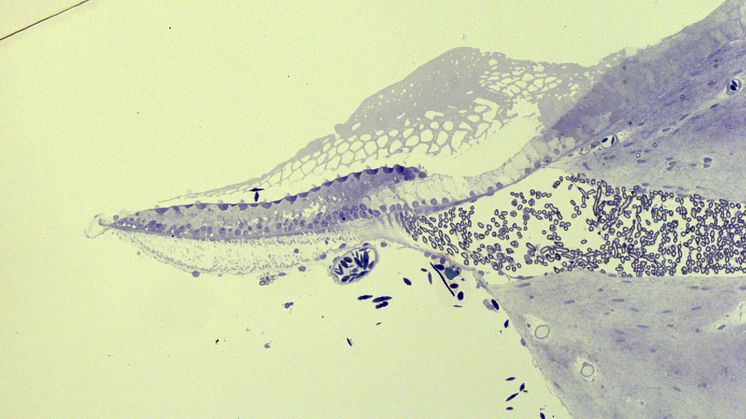Press release -
Safe surgical access to the central core of the human cochlea verified
An international team of surgeons and scientists from, among others, Uppsala University has confirmed secure surgical access to the central core of the human cochlea. The research, published today in Scientific Reports, is critical to the first in-human trials of new cell, gene and drug therapies for the inner ear, and will assist with treatment for improving hearing loss and deafness over the long-term.
Peer-review/Imaging analysis/Human tissue samples
“Using the advanced 3-D imaging techniques we found new intriguing trajectory pathways for cell delivery. We are pleased to be a part of this exciting project with our international colleagues that may form a ground pillar for clinical trials”, says Professor Helge Rask-Andersen from Uppsala University.
The human cochlea lies in the base of the skull, encased by the hardest bone in the human body. This has hampered the progress of discovering new treatments for hearing loss. Using a detailed representation of the microanatomy of the peripheral auditory neural structure, surgeons have now been able to reach the human cochlea safely with a routine surgical approach.
The team from Uppsala University, Guy’s and St. Thomas’ NHS Foundation Trust in London, University of Sheffield, University of Nottingham, and Western University in Canada, has proven and confirmed a secure clinical pathway to the inner ear, which will enable the application of a range of regenerative therapies to restore hearing.
“Until now this region of the inner ear has been inaccessible in humans. This means that the pioneering advanced therapies to repair the auditory nerve, which have already proved successful in animal models, have been hampered by limited anatomical knowledge and the lack of a safe access to Rosenthal’s canal - the compartment that houses the auditory neurons within the central core of the cochlea”, says Marcelo Rivolta, Professor of Sensory Stem Cell Biology at the University of Sheffield and Founder of Rinri Therapeutics. “We believe these findings will have immediate impact on both our understanding of the microstructure of the inner ear and the first in-human trials of new gene and drug therapies to improve hearing loss and deafness.”
Dr Simon Chandler, CEO of Rinri Therapeutics, says: “This research now paves the way for the successful delivery of our regenerative cell therapy for hearing loss, that will bring significant positive impacts to healthcare systems and economies across the globe.”
Professor Dan Jiang, Director of the Hearing Implant Centre at Guy’s and St. Thomas’ Hospital, and Chief Investigator on the project, said: “This research provides intuitive knowledge to ear surgeons about the targets of the future cell, gene and drug therapies, and will allow them to reach those targets safely, as they have been trained to do.”
Gerry O’Donoghue, Professor of Otology and Neurotology at the University of Nottingham, and Clinical Advisor to Rinri Therapeutics: “The inaccessibility of the human cochlea has hampered the progress of curative treatments for SNHL to date. These findings however will enable the safe delivery of regenerative therapeutics to their target structures within the relatively impenetrable human cochlea, de-risking future clinical interventions and paving the way for clinical trials.”
Professor Sumit Agrawal, from Western University in Canada said: “We are delighted that our data was able to contribute to such a vital piece of research, which will enable significant advancements in the clinical trials and treatment of sensorineural hearing loss.”
Li, H., Agrawal, S., Rohani, S.A. et al. Unlocking the human inner ear for therapeutic intervention. Sci Rep 12, 18508 (2022). https://doi.org/10.1038/s41598-022-22203-2
For further information:
Helge Rask-Andersen, Professor Otorhinolaryngology at Department of Surgical Sciences at Uppsala University, helge.rask-andersen@surgsci.uu.se, +46 (0)70-611 02 67.
The study was funded by a grant from Rinri Therapeutics in collaboration with the Swedish Hearing Research Foundation, Hörselforskningsfonden.
Related links
Topics
Categories
Uppsala University is the oldest university in Sweden, founded in 1477, and is ranked among the world’s top higher education institutions. We are a comprehensive research-intensive university with a strong international standing and a clear mission: To pursue top-quality research and education and to interact constructively with society. At the heart of this mission is the endeavour to advance sustainable development, engage with the wider community, and promote openness and respect. Our most important assets are all the individuals – over 54,000 students and more than 7,500 employees – who enrich the university with their curiosity and dedication. www.uu.se

